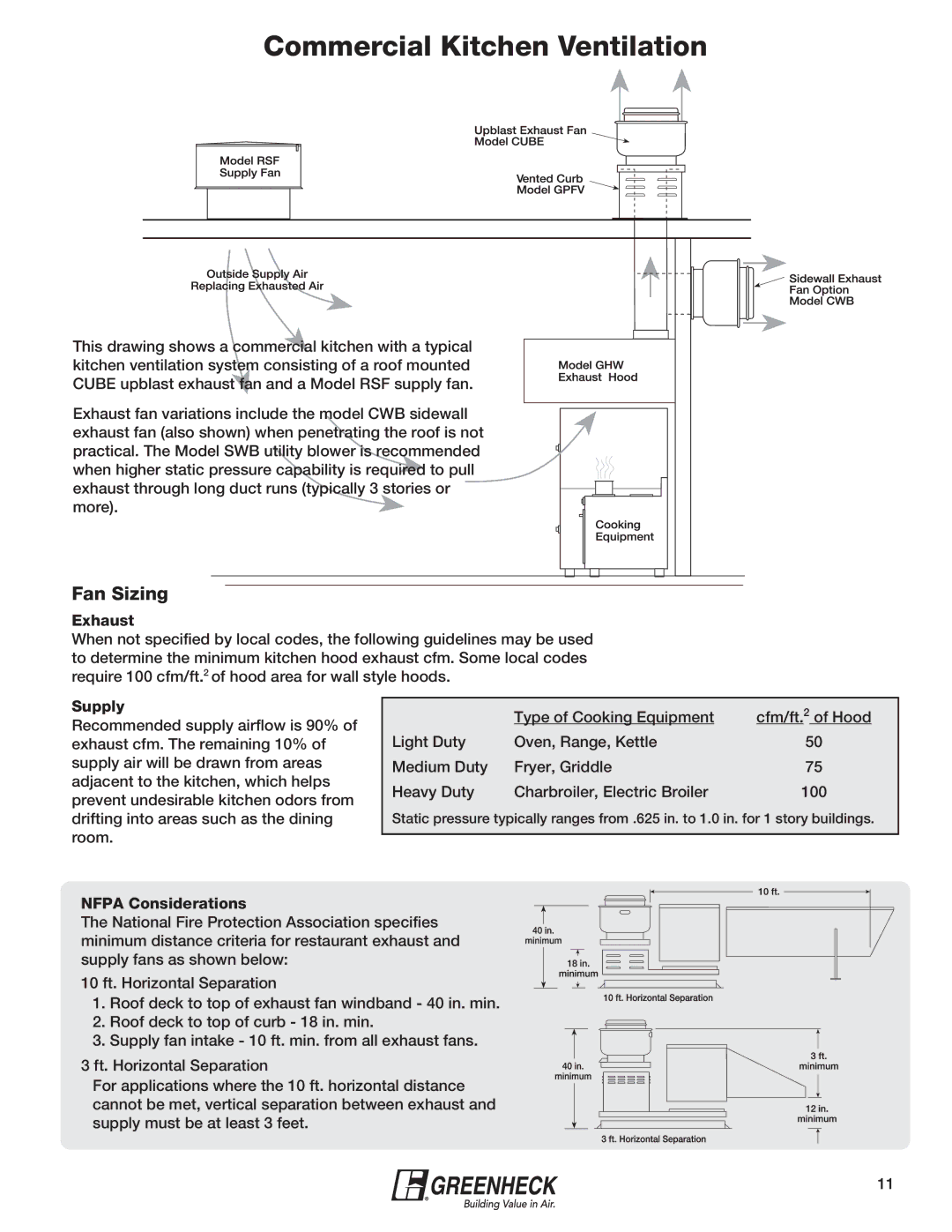240XP-CUb specifications
The Greenheck Fan 240XP-CUb is a premium addition to the commercial and industrial ventilation market, delivering exceptional performance and reliability. Designed for a variety of applications, the 240XP-CUb combines cutting-edge technology with robust construction to ensure efficient airflow management.One of the standout features of the 240XP-CUb is its energy efficiency. This model is engineered to minimize energy consumption while maximizing airflow, thanks to advanced motor technology and aerodynamically optimized fan blades. The fan operates with a sound level that is comfortably low, making it an ideal choice for environments where noise reduction is critical, such as schools, hospitals, and office buildings.
The 240XP-CUb is equipped with a high-efficiency, permanent split capacitor (PSC) motor that enhances its overall performance. This type of motor reduces energy costs while providing consistent operation, ensuring longevity and durability. With variable speed options, the fan can be tailored to suit specific application requirements, allowing for better control over airflow and energy use.
In terms of construction, the Greenheck Fan 240XP-CUb is built to last. It features a heavy-duty galvanized steel housing that is resistant to corrosion and can withstand the rigors of commercial use. This ensures that the fan remains reliable in various environments, from manufacturing facilities to food processing plants. The design also includes an easy-access panel for maintenance, further enhancing the unit's user-friendly nature.
Another significant aspect of the 240XP-CUb is its versatility. It can be installed in a range of configurations, including horizontal and vertical orientations, making it suitable for different spaces and applications. Furthermore, it supports a variety of accessories and options that allow for customization, such as inlet guards, dampers, and different mounting configurations.
The Greenheck Fan 240XP-CUb adheres to the latest regulatory standards for efficiency and emissions, making it an environmentally friendly choice for businesses looking to reduce their carbon footprint. With its combination of performance, efficiency, and durability, the 240XP-CUb stands out as a top-tier solution for anyone in need of reliable ventilation solutions. Whether for new installations or retrofits, this fan is designed to meet the demands of modern HVAC systems, ensuring a comfortable and healthy environment.

